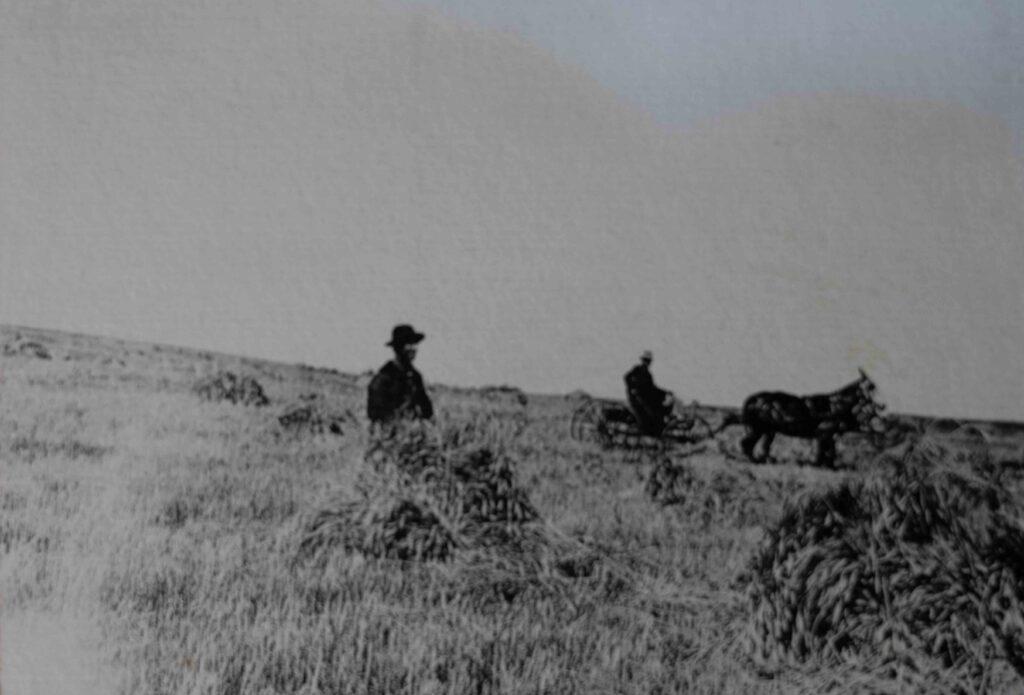
Our first grain crops were planted in 1900 – Rye and Oats being the first crops grown. It was considered to be too far north, and the growing season too short, to raise spring wheat. A few years later fall wheat became an important crop. Timothy was planted on some of the meadow along about this time. I well remember the early-time threshing outfits which came in the fall of the year to thresh our first corps. About ten horses supplied the power that pulled a whim and walked around in a circle. The halter rope of one horse was tied to the whipple tree of the horse in front. They walked around in a circle and the driver stood on a platform in the centre of the ring and continually cracked his whip. Bundles were pushed into the machine by hand and the bundle twine had to be cut on each bundle.
The grain measurer was an important member of each outfit. He measured the grain as it came from the machine in a bushel measure and it was then poured into a sack. The straw coming from the machine had to be stacked by hand and I remember how I hated the job of trying to keep straw away from the end of the straw conveyor. The threshing bill was not paid in cash but a toll in bushels was taken from each day’s operation by the threshing crew. When the first steam threshing outfit pulled in to thresh us, I was overjoyed because it blew the straw into a pile and did not require hand-stacking.
Our first foreman, Edward Kenny, left us in the year 1901. He was succeeded for a short time by Peter Stephenson of Holden, Utah, who had worked as a foreman for my father in the Utah days. He was a person whom my father thought a lot of, and he was an uncle of Thomas Stephenson who became foreman in 1911. He remained in Canada for only about two years and then was succeeded by the late Mr. John Kenny, also of Holden, Utah, and who had worked for my father as a young man in the Utah ranching days.
John Kenny remained as foreman until the year 1911. He was full of energy, very impatient and a real goer. Anyone who worked for him did not sit at the dinner table very long. He did not tolerate deliberation at meal time and so it became a continual race between the men to see who could bolt his meal the fastest and get out of the house first. I also remember John Kenny cursing because daylight did not come sooner so that he could get going with his work. He was really conscientious and one who was always remembered by anyone who had worked for him or with him.
